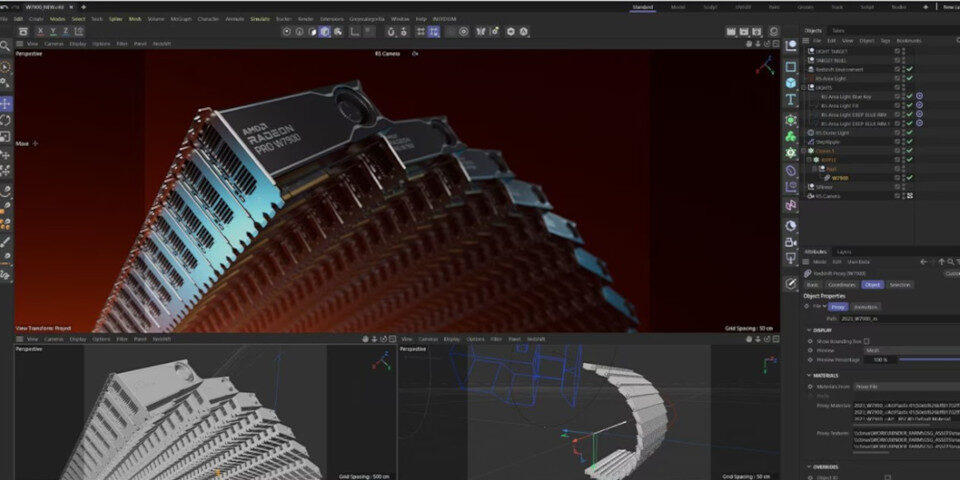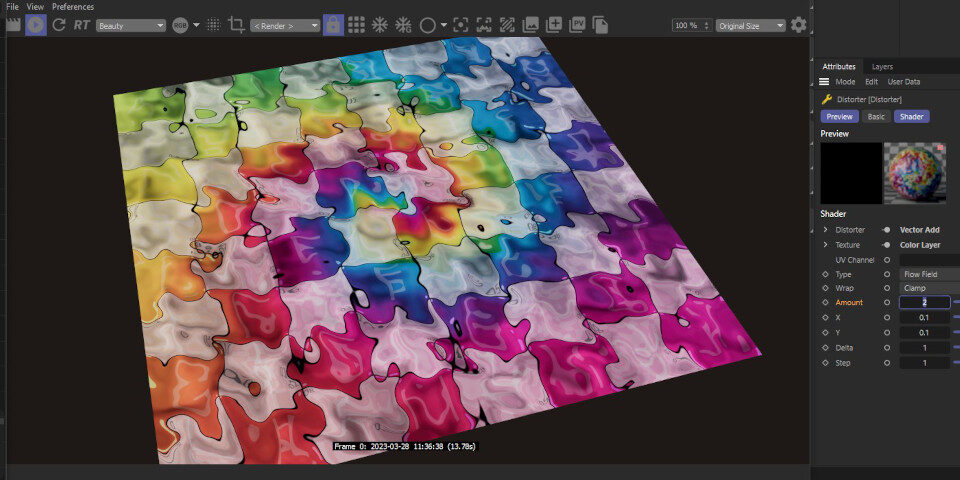Maxon ships Redshift 3.5.15

Originally posted on 17 May 2023, and updated with more information on GPU ray tracing on 2 June.
Maxon has released Redshift 3.5.15, its latest version of the CPU/GPU-accelerated production renderer.
The update introduces experimental support for AMD GPUs in the software, which previously only supported Nvidia graphics cards and Apple Silicon processors.
Other new features include a Distortion Utility shader for breaking up repeating textures; and the Flakes and Pavement shaders and backplate system have been rolled out to Redshift’s DCC plugins.
Support for AMD GPUs moves into public beta
One key change in Redshift 3.5.15 is that the software now supports AMD GPUs.
Announced last year, the change – achieved using AMD’s HIP (Heterogeneous-Compute Interface for Portability) framework – makes Redshift compatible with AMD, Apple Silicon and Nvidia processors.
AMD GPUs supported include current- and previous-generation Radeon Pro cards, including the Radeon Pro W7900, W7800, W6800, W6600, W5700 and VII.
Consumer GPUs supported include the Radeon RX 7950 XTX, RX 7950 XT, RX 7900, RX 6950, RX 6700 XT, RX 6600 and RX 5700 XT.
Some older and lower-spec cards may also work, but have not been actively tested by Maxon. You can find more details in this forum thread.
The release notes don’t include any benchmark figures, but AMD claims that HIP has minimal impact on application performance.
No hardware-accelerated ray tracing on AMD GPUs in the current release
However, the implementation does not yet support HIP RT, the HIP ray tracing library, meaning that there is no hardware-accelerated ray tracing on cards with dedicated ray tracing cores, unlike with Nvidia GPUs.
As a result, the current performance of the Radeon Pro W7000 and W6000 Series and Radeon RX 7000 and 6000 Series GPUs will be significantly lower than their full potential.
You can see the impact that hardware-accelerated ray tracing has on performance in Redshift this group test of AMD and Nvidia GPUs conducted by Puget Systems.
Maxon tells us that it plans is to add support for it in future “as HIP continues to improve”.

Redshift core: new Distortion Utility shader and update to the Noise shader
Other new features in the Redshift core include the Distortion Utility shader.
Based on Cinema 4D’s UV Distorter node, it makes it possible to drive distortion of UV maps via textures or shaders, to break up repeating textures.
In addition, the Noise shader gets a new Loop Period setting.
Updates to the plugin editions and Redshift RT
The Flakes shader and Pavement shader added to the core in recent releases become available in all of the DCC plugins.
In addition, the render backplate system added in Redshift 3.5.14 becomes available in the Blender, Houdini and Katana plugins.
Redshift RT, the near-real-time hybrid ray tracing/rasterisation mode also gets support for the backplate system, mixed rendering in the Cinema 4D and Houdini viewports, and better denoising and antialiasing.
System requirements and price
Redshift 3.5.15 is available for Windows 10, glibc 2.17+ Linux and macOS 11.5+.
The renderer’s integration plugins are compatible with 3ds Max 2015+, Blender 2.83+, Cinema 4D R21+, Houdini 17.5+ (18.0+ on macOS), Katana 3.0v1+ and Maya 2016.5.
The software is rental-only, with individual subscriptions costing $45/month or $264/year.
Read an overview of the new features in Redshift 3.5.15 on the software’s Trello product forum
Read a full list of AMD GPUs supported on the Redshift forum
(Registration required)
